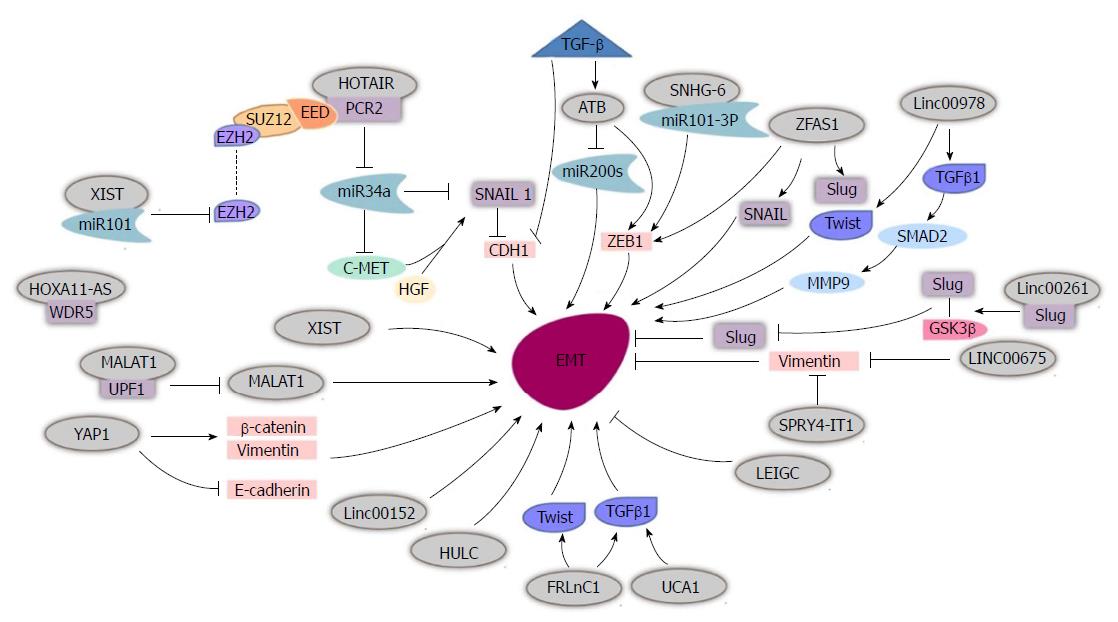Copyright
©The Author(s) 2018.
World J Gastroenterol. Sep 7, 2018; 24(33): 3724-3737
Published online Sep 7, 2018. doi: 10.3748/wjg.v24.i33.3724
Published online Sep 7, 2018. doi: 10.3748/wjg.v24.i33.3724
Figure 1 Long non-coding RNAs affect epithelial-mesenchymal transition in gastric cancer cells.
HOTAIR recruits PRC2 to silence miR-34a, and then activates the HGF/c-Met/Snail pathway to promote EMT. TGF-β induces lncATB, which inhibits miR-200s and provokes ZEB1 to promote EMT. SNHG6 binds miR-101-3P to activate ZEB1 and then promotes EMT. lncRNA ZFAS1 induces EMT by activating SNAIL, Slug, ZEB1 and Twist. Linc00978 induces Twist and TGFβ1, and TGFβ1 then activates SMAD2 and MMP9 to facilitate EMT. MALAT1 binds UPF1 to reduce its level and activate EMT. FRLnC1 induces EMT by activating Twist and TGFβ1. HUCA1 induces EMT via TGFβ1 activation. YAP1 promotes EMT by increasing vimentin and β-catenin, and decreasing E-cadherin. lncRNA XIST, Linc00152 and HULC promote EMT. Linc00261 binds Slug resulting in reduced Slug levels and decreased EMT. LINC00675 and SPRY4-IT1 restrain EMT by reducing vimentin. LEIGC inhibits EMT. lncRNAs: Long non-coding RNAs; HOTAIR: HOX transcript antisense intergenic RNA; EMT: Epithelial-mesenchymal transition; YAP1: Yes-associated protein 1; MALAT1: Metastasis associated lung adenocarcinoma 1.
- Citation: Lin MT, Song HJ, Ding XY. Long non-coding RNAs involved in metastasis of gastric cancer. World J Gastroenterol 2018; 24(33): 3724-3737
- URL: https://www.wjgnet.com/1007-9327/full/v24/i33/3724.htm
- DOI: https://dx.doi.org/10.3748/wjg.v24.i33.3724









